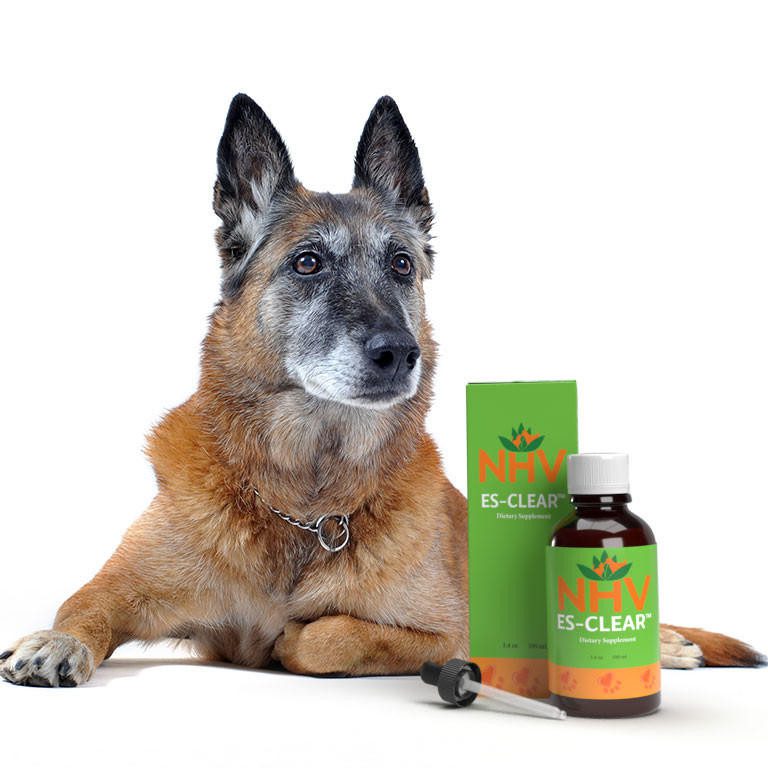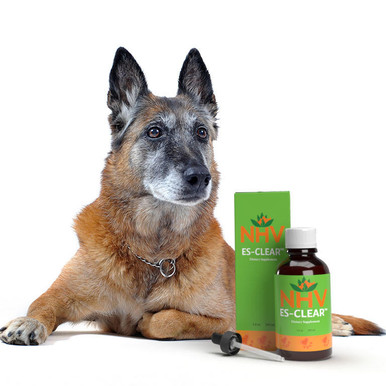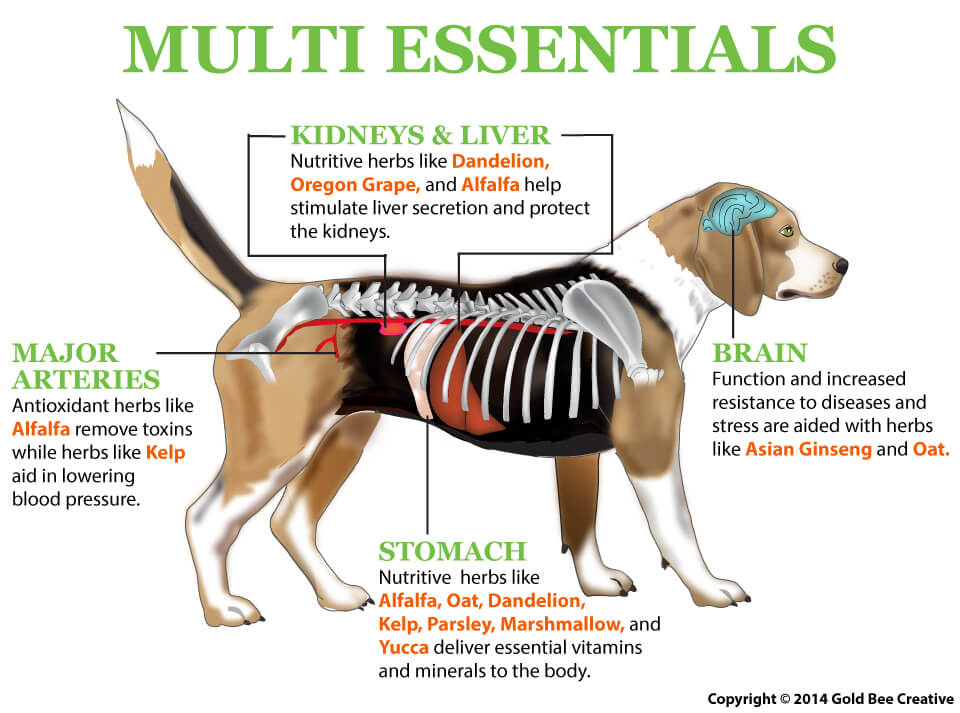
Osteosarcoma in Dogs, Cats, and Other Pets

Osteosarcoma, a malignant neoplasm originating from bone tissue, poses a significant health challenge for our beloved pets. As a frequently encountered form of primary bone cancer in animals, particularly in dogs, its diagnosis often heralds a complex journey fraught with clinical and emotional complexities. In this detailed exploration, we delve into the multifaceted aspects of osteosarcoma in dogs, cats, and other pets, encompassing its etiology, clinical presentation, diagnostic modalities, therapeutic interventions, and the adjunctive role of NHV supplements in the comprehensive management approach.
Which pets are affected by Bone Cancer?
While osteosarcoma in dogs is most common, it sporadically manifests in other species, albeit at substantially lower frequencies. The disparity in incidence underscores the imperative of species-specific understanding and tailored management strategies to mitigate its deleterious effects effectively.
Need Professional Guidance?
Schedule a consultation with one of our experts
The clinical manifestations of osteosarcoma in dogs and other pets are multifactorial, reflecting the intricate interplay between genetic predispositions, environmental influences, and stochastic events. Classical signs encompass progressive lameness, localized pain, swelling, and, in advanced stages, pathological fractures. Underlying mechanisms driving osteosarcoma pathogenesis often implicate genetic aberrations disrupting cellular homeostasis, although environmental carcinogens may also contribute to tumorigenesis.
Accurate diagnosis hinges upon a systematic approach integrating clinical evaluation, advanced imaging modalities (e.g., radiography, computed tomography), and histopathological confirmation via biopsy. Therapeutic strategies encompass a spectrum of options, ranging from surgical excision, limb amputation, adjuvant chemotherapy, and radiation therapy to multimodal protocols tailored to individual patient profiles.
Pain Management for Osteosarcoma in Dogs, Cats, and Other Pets
Effective pain management constitutes a cornerstone of osteosarcoma care, aimed at enhancing patient comfort, optimizing functional capacity, and augmenting quality of life. Pharmacological agents, including opioids, nonsteroidal anti-inflammatory drugs (NSAIDs), and adjuvant analgesics, are often complemented by physical rehabilitation, acupuncture, and neuromodulatory techniques to mitigate nociceptive stimuli and attenuate disease-associated discomfort.
Supportive Care
Beyond conventional therapeutic modalities, holistic supportive care assumes paramount significance in fostering holistic well-being and emotional resilience for both pets and their caregivers. Psychosocial support, nutritional optimization, and palliative interventions synergistically contribute to alleviating distress, enhancing coping mechanisms, and fostering a nurturing environment conducive to therapeutic efficacy.
Lifestyle Adjustments for Osteosarcoma in Dogs and Other Pets

Optimal management of osteosarcoma necessitates adaptive lifestyle modifications tailored to accommodate evolving physical limitations and optimize environmental ergonomics. Proactive measures encompass home environment modifications, provision of orthopedic support aids, and dietary adjustments aimed at preserving lean muscle mass, promoting metabolic homeostasis, and ameliorating treatment-associated adverse effects.
Follow-up Care for Bone Cancers
Long-term surveillance remains indispensable in the post-treatment phase to monitor disease recurrence, evaluate treatment response, and preemptively address emerging complications. Regular veterinary assessments, imaging surveillance, and client education initiatives facilitate early detection of disease progression, thus enabling timely intervention and optimizing therapeutic outcomes.
Recommended Products
NHV supplements, revered for their natural origins and therapeutic efficacy, offer a complementary armamentarium in the integrative management of osteosarcoma.
Among the recommended NHV supplements for addressing the multifaceted needs of pets with osteosarcoma are:
NHV Nature’s Immuno Crafted with a synergistic blend of immune-modulating mushrroms serves as a potent adjunct in supporting the body’s innate defense mechanisms against cancerous cells. By enhancing immune surveillance and augmenting antitumor immunity, this formulation aids in fortifying the body’s resilience against disease progression and recurrence.
NHV ES-Clear Formulated with a proprietary blend of, NHV ES-Clear exerts profound anticancer effects by targeting malignant cells, inhibiting angiogenesis, and modulating inflammatory pathways. This comprehensive formulation offers multifaceted support in mitigating tumor burden, alleviating treatment-associated side effects, and fostering overall vitality and resilience.
NHV Multi Essentials Enriched with essential vitamins, minerals, and antioxidants, NHV Multi Essentials provides comprehensive nutritional support to pets undergoing cancer treatment. By replenishing key micronutrients, optimizing metabolic function, and promoting cellular integrity, this formulation aids in supporting overall health, enhancing treatment tolerance, and facilitating optimal therapeutic outcomes.
NHV Pet Omega-3 Rich in omega-3 fatty acids derived from premium fish oil sources, NHV Pet Omega-3 offers anti-inflammatory and immunomodulatory benefits essential for pets with osteosarcoma. By attenuating inflammation, supporting joint health, and optimizing cardiovascular function, this supplement promotes mobility, comfort, and overall quality of life in pets navigating the challenges of cancer treatment.
Conclusion
Osteosarcoma is a formidable challenge necessitating a multidisciplinary approach encompassing clinical expertise, scientific innovation, and compassionate care. Through collaborative efforts guided by empirical evidence and compassionate ethos, we endeavor to unravel the intricacies of osteosarcoma pathogenesis, optimize therapeutic efficacy, and augment patient-centric outcomes. Armed with a comprehensive understanding of the disease spectrum, a repertoire of therapeutic modalities, and the adjunctive support of NHV supplements, we stand poised to confront osteosarcoma with resilience, empathy, and unwavering determination, heralding a future imbued with healing, hope, and holistic well-being for our cherished companions.

Natures Immuno – Support for Pets Immune System
Natures Immuno- blend of mushrooms that help support immune function

Natures Immuno- blend of mushrooms that help support immune function
- item number
- ph8600fbd
- weight
- 0.7
-
Description
- item number
- ph8600fbd
- weight
- 0.7
-
Ingredients
-
Dosage

ES Clear for Pet Vitality
ES Clear for Pet Vitality
ES Clear -Helps support your pets immune system and over all wellbeing

ES Clear -Helps support your pets immune system and over all wellbeing
- item number
- ph1600fb
- weight
- 0.7
-
Description
- item number
- ph1600fb
- weight
- 0.7
-
Ingredients
-
Dosage
multivitamin support

Multi Essentials for dogs
Multi Essentials for dogs
Herbal Digestive Aid, Energy Booster, and Multivitamin for Dogs
buy 2 and save $3
3 month supply for a small to medium size pet
- Contains herbs that are high in antioxidants, minerals and vitamins
- Helps reduce lethargy in dogs and supports a healthy metabolism
- Helps with nutrient absorption
- Useful for puppies, and dogs of any age
NHV’s multivitamins for dogs targets the brain, stomach, major arteries, kidneys, and liver with a powerful blend of herbal support.


- Contains herbs that are high in antioxidants, minerals and vitamins
- Helps reduce lethargy in dogs and supports a healthy metabolism
- Helps with nutrient absorption
- Useful for puppies, and dogs of any age
NHV’s multivitamins for dogs targets the brain, stomach, major arteries, kidneys, and liver with a powerful blend of herbal support.

Millions of people take multivitamins daily to support their health, and it only makes sense our canine companions can benefit just as much. This 100% natural plant-based liquid blend can help your dog with nutritional deficiencies.
Signs of Possible Vitamin Deficiency in Dogs
- Fatigue
- Hair loss
- Reproductive issues
- Skin problems
NHV’s Multi-Essentials are packed with herbs that are rich in vitamins and minerals. This vet-formulated blend is designed to benefit your dog’s health using all-natural organically grown herbs with no additives or preservatives.
Even if your pet is healthy, supplying a multivitamin is essential to maintain good health, and some pets need more vitamins and minerals than others. For more, read NHV’s blog, vet talk with Dr. Hillary Cook.
Benefits of NHV’s Multivitamins for Dogs
- Stimulates metabolism
- Reduces fatigue and increases energy levels
- Aids effective digestion
- Provides added support for pets exposed to environmental toxins
- Promotes strong muscles and bone growth
- Helps to fill nutritional voids due to poor diet or illness
You can read NHV's blog about the importance of dog vitamin supplements. All pets can benefit from NHV’s Natural Pet Product, even small exotic pets.
If you have questions about plant-based supplements including our multivitamins for dogs, you can schedule a consultation with one of our highly trained holistic veterinarians, because, at NHV, total health and wellness for all pets is our top priority.

- item number
- PH1200d
- weight
- 0.7
- volume
- 3.4 fl. oz. (100ml)
- form
- liquid
- life stages
- adult, senior, puppy
- made in
- canada
- Alfalfa - An excellent source of chlorophyll, which acts as an antioxidant in the bloodstream of your little one. High in vitamins A, B1, B12, C, D, E, and K.
- Kelp - An excellent source of vitamins A, B12, B6, and C.
- Parsley - Rich in vitamins, minerals and protein, Parsley helps expel intestinal gas and bloating in furkiddos. High in vitamins (A, C, B12, K) and minerals calcium, potassium, iron, magnesium, and phosphorus.
- Oregon Grape - Helps support the liver, digestive system and mucous membranes.
- Chickweed - High in vitamins and minerals, including beta-carotene, calcium, zinc, magnesium, potassium, thiamin, and zinc. Chickweed helps with stomach and bowel problems.
- Marshmallow - A diuretic herb that may control bacterial infection and protect the intestinal mucosa.
- Oat - High in protein, B vitamins, as well as vitamins E and K, and minerals such as calcium and copper.
- Dandelion - May help improve the appetite and digestion of pets. Dandelion also has a high content of vitamins A, B, C, and D and minerals like phosphorus and magnesium.
- Stinging nettle - May help strengthen the immune system of your little one. It is also an excellent source of minerals like magnesium, calcium, potassium, and phosphorous.
- Yucca - Rich in vitamin C, beta-carotene, calcium, iron, magnesium, and B vitamins, Yucca also helps with mineral and vitamin absorption.
- Asian Ginseng - Rich in B vitamins, Asian Ginseng supports metabolism and helps lower blood pressure.
Pet's Weight Dosage
To be taken twice daily. All NHV supplements are designed to be used together, and can, therefore, be given at once for convenience.
Select your pet's weight to determine the correct dose.
To be taken twice daily. Determine your pet’s weight and then use the easy chart below to determine the correct dose. This is the minimum dosage.
Pet's Weight Dosage
0 - 15 lb = 0.5 ml
16 - 30 lb = 1.0 ml
31 - 45 lb = 1.5 ml
46 - 60 lb = 2.0 ml
61 - 75 lb = 2.5 ml
Over 75 lb = 3.0 ml
How to Administer
Shake well before use. The easiest method is to use the dropper provide and places the drops into your pet’s food or favorite treat. You can also use the dropper and squirt directly into the pet’s mouth.
Some pets can be finicky, if this occurs consider hiding the drops in foods most pet’s love such as fish, chicken or yogurt or a favourite treat. If your pet only eats dry food then soak a few kibbles at feeding time.
For Best Results
Herbal dietary supplements are beneficial to the health and wellbeing of your pet and are safe for long-term use. Every pet responds to natural herbal supplements differently, therefore it is important to be consistent and administer the product daily. Supplements generally take two to four weeks to take effect, however this will vary from one animal to the next.
Product Storage
All NHV Natural Pet Products are pure herbal extracts and contain no artificial additives, preservatives or coloring. Shelf life after opening is 6 months and must be refrigerated after opening.
Cautions and Contraindications
Do not use Multi Essentials in pregnant or nursing animals. Speak to your vet before using our products. A second visit is recommended if your pet’s condition does not improve, or deteriorates after continued use of the supplements.
All information provided by NHV Natural Pet Products is for educational purposes only.
-
Description
Millions of people take multivitamins daily to support their health, and it only makes sense our canine companions can benefit just as much. This 100% natural plant-based liquid blend can help your dog with nutritional deficiencies.
Signs of Possible Vitamin Deficiency in Dogs
- Fatigue
- Hair loss
- Reproductive issues
- Skin problems
NHV’s Multi-Essentials are packed with herbs that are rich in vitamins and minerals. This vet-formulated blend is designed to benefit your dog’s health using all-natural organically grown herbs with no additives or preservatives.
Even if your pet is healthy, supplying a multivitamin is essential to maintain good health, and some pets need more vitamins and minerals than others. For more, read NHV’s blog, vet talk with Dr. Hillary Cook.
Benefits of NHV’s Multivitamins for Dogs
- Stimulates metabolism
- Reduces fatigue and increases energy levels
- Aids effective digestion
- Provides added support for pets exposed to environmental toxins
- Promotes strong muscles and bone growth
- Helps to fill nutritional voids due to poor diet or illness
You can read NHV's blog about the importance of dog vitamin supplements. All pets can benefit from NHV’s Natural Pet Product, even small exotic pets.
If you have questions about plant-based supplements including our multivitamins for dogs, you can schedule a consultation with one of our highly trained holistic veterinarians, because, at NHV, total health and wellness for all pets is our top priority.

- item number
- PH1200d
- weight
- 0.7
- volume
- 3.4 fl. oz. (100ml)
- form
- liquid
- life stages
- adult, senior, puppy
- made in
- canada
-
Ingredients
- Alfalfa - An excellent source of chlorophyll, which acts as an antioxidant in the bloodstream of your little one. High in vitamins A, B1, B12, C, D, E, and K.
- Kelp - An excellent source of vitamins A, B12, B6, and C.
- Parsley - Rich in vitamins, minerals and protein, Parsley helps expel intestinal gas and bloating in furkiddos. High in vitamins (A, C, B12, K) and minerals calcium, potassium, iron, magnesium, and phosphorus.
- Oregon Grape - Helps support the liver, digestive system and mucous membranes.
- Chickweed - High in vitamins and minerals, including beta-carotene, calcium, zinc, magnesium, potassium, thiamin, and zinc. Chickweed helps with stomach and bowel problems.
- Marshmallow - A diuretic herb that may control bacterial infection and protect the intestinal mucosa.
- Oat - High in protein, B vitamins, as well as vitamins E and K, and minerals such as calcium and copper.
- Dandelion - May help improve the appetite and digestion of pets. Dandelion also has a high content of vitamins A, B, C, and D and minerals like phosphorus and magnesium.
- Stinging nettle - May help strengthen the immune system of your little one. It is also an excellent source of minerals like magnesium, calcium, potassium, and phosphorous.
- Yucca - Rich in vitamin C, beta-carotene, calcium, iron, magnesium, and B vitamins, Yucca also helps with mineral and vitamin absorption.
- Asian Ginseng - Rich in B vitamins, Asian Ginseng supports metabolism and helps lower blood pressure.
-
Dosage
Pet's Weight Dosage
To be taken twice daily. All NHV supplements are designed to be used together, and can, therefore, be given at once for convenience.
Select your pet's weight to determine the correct dose.
To be taken twice daily. Determine your pet’s weight and then use the easy chart below to determine the correct dose. This is the minimum dosage.
Pet's Weight Dosage
0 - 15 lb = 0.5 ml
16 - 30 lb = 1.0 ml
31 - 45 lb = 1.5 ml
46 - 60 lb = 2.0 ml
61 - 75 lb = 2.5 ml
Over 75 lb = 3.0 ml
How to Administer
Shake well before use. The easiest method is to use the dropper provide and places the drops into your pet’s food or favorite treat. You can also use the dropper and squirt directly into the pet’s mouth.Some pets can be finicky, if this occurs consider hiding the drops in foods most pet’s love such as fish, chicken or yogurt or a favourite treat. If your pet only eats dry food then soak a few kibbles at feeding time.
For Best Results
Herbal dietary supplements are beneficial to the health and wellbeing of your pet and are safe for long-term use. Every pet responds to natural herbal supplements differently, therefore it is important to be consistent and administer the product daily. Supplements generally take two to four weeks to take effect, however this will vary from one animal to the next.Product Storage
All NHV Natural Pet Products are pure herbal extracts and contain no artificial additives, preservatives or coloring. Shelf life after opening is 6 months and must be refrigerated after opening.Cautions and Contraindications
Do not use Multi Essentials in pregnant or nursing animals. Speak to your vet before using our products. A second visit is recommended if your pet’s condition does not improve, or deteriorates after continued use of the supplements.All information provided by NHV Natural Pet Products is for educational purposes only.

 USD
USD
 Canadian Dollars
Canadian Dollars




